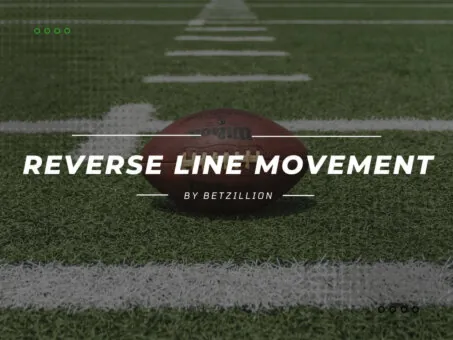This website uses cookies so that we can provide you with the best user experience possible. Cookie information is stored in your browser and performs functions such as recognising you when you return to our website and helping our team to understand which sections of the website you find most interesting and useful.
Sports Betting Systems

The definition of an online betting system is a series of events for a particular sport or game that represent a good scenario. In simpler terms, systems improve your chances to win. Please take note that they’re worthwhile, but don’t promise returns. It’s still all down to your expertise or luck. But, with the right betting system applied to sports betting, you will be able to beat the bookies more often.
Sports betting systems represent a predetermined set of rules that punters can follow to improve their chances of making a profit. They provide direction on identifying events, types of wagers, and the size of the stake.
These methods don’t promise returns. You still need to rely on your expertise and occasional luck. But with the right betting system, you will be able to beat the bookies more often. There’s no one standard system that works for everyone. Some are designed for new punters. Others are tailored for high rollers. In this guide, our experts highlighted the best options that have the most flexibility and the highest chance of success. You can test them using smaller betting samples and see which one works the best for you.
Common Sports Betting Systems
There are several common betting systems that most punters are already familiar with. For example, the Martingale strategy and Oscar’s Grind betting system are popular in roulette. They can also be applied to accumulator bets and a variety of sports like football, tennis, basketball, and American football.
Most popular betting systems fall into either negative progressive or positive progressive categories. Let’s see what each one represents.
Negative Progressions System
Negative betting systems instruct punters to increase their stake after each losing wager. The idea is that you will be able to compensate for the losses with one bigger win. The issue is that losing streaks can be costly with these types of systems. They are best suited for large bankrolls.
The most common negative progressive betting systems are Martingale, Labouchere, and D’Alembert.
Positive Progression System
With positive progression betting systems, you are required to increase your betting units after wins. They aim to maximize winning streaks. Losing streaks become less costly because your stake remains the same.
This system is suited for high rollers but also punters with moderate bankrolls. The most notable examples are Paroli and parlays.
Betting Units
Units are used to simplify betting systems. Most systems will instruct you to double the number of units after a losing wager rather than telling you the exact amount of money you should bet.
You can set the value of the unit yourself. It usually represents a percentage of your bankroll. For example, if you start with $100, you can decide that the unit will be 2% of your bankroll. In this case, when the system requires you to wager one unit, your stake will be $2. Depending on the system, the value of the unit can be based on the starting bankroll or your current bankroll.
Martingale System
The Martingale system is one of the most popular systems for roulette. With the right approach, it can be tailored to sports betting.
It’s a negative progression system commonly used in combination with even-money odds. You wager one unit as long as you are winning. You double the number of units after each loss.
To put things into perspective, let’s see an example with one betting unit:
- You wager $2 on a match-winner and lose
- The next bet is $4 on similar odds (doubling after a loss)
- If that one loses as well, your next stake is $8
- You win that one and set the $8 aside
- Start again by wagering the original unit
The problem with the Martingale betting system is that if you string several losses in a row, you can lose a lot of money. It can be a winning system for those with deep pockets, but it doesn’t always offer consistent profit.
D’Alembert Betting Theory
D’Alembert is similar to Martingale. It is also a negative progression system, but the progression of raising stakes is slower.
The D’Alembert system requires you to increase your bet after losses by adding one unit. After each win, you decrease the stake by one unit.
Here is an example:
- You bet $2 (one unit) at the start and lose
- The stake on the next wager is two units ( $4)
- If you lose again, you increase the bet by one unit and bet a total of $6
- In case you win, you are required to decrease the previous stake by one unit
- The following wager will require a bet of $4
D’Alembert is a more forgiving betting system towards modest bankrolls. The long losing streaks won’t exhaust your bankroll quickly compared to Martingale. However, it can take longer for you to recover your losses.
Labouchere System
Developed by big roulette fan Henry Labouchere, this system is known as the cancellation theory. It’s a bit more complex than the others. Its application for sports betting works best with even-money odds.
Before using it, you must decide how much money you want to win. Let’s say you want to end with a profit of $15. You start by writing down a sequence of numbers that add up to that amount: 1-2-3-4-5.
You are required to wager the stake in the sum of the first and the last number in the sequence. In this case, it’s $6 (1+5). If you win, you will cross these numbers. If you lose, add the bet to the sequence.
The idea is to cross off all the numbers in the sequence and claim the desired amount of money. Once you do that, you can start all over again with a new profit.
It is yet another system suitable for large bankrolls. In theory, the sequence can go on infinitely. If you lose most of the time, the system will become too costly.
Paroli Formula
The Paroli online betting system is a positive progression formula that requires punters to double their stake after each win until they hit 3 in a row. It’s one of the oldest systems, used as early as the 16th century.
You start by wagering one unit on even-money odds. If you lose, your stake remains one unit. If you win, you bet 2 units. You continue doubling your bet until you hit 3 wins in a row. Then you start over.
The only problem with this system is that it’s hard to consistently hit 3 successful wagers in sports. It’s not the most precise or reliable betting system, so it won’t always work in your favor.
Parlay System
The parlay is one of the most profitable sports betting systems, but not without flaws. Often called ‘let it ride,’ it requires punters to increase their wager after a win by including the original unit and the winnings. The goal is to gain a larger profit from a winning streak.
Staking the original unit and the winnings means you can lose it all in one sweep. It’s a risky betting system that doesn’t work in the long term.
Insurance System
The insurance system reduces the risk associated with the best sports betting systems by requiring you to moderately adjust stakes after losses.
If your first bet loses, the system instructs you to increase the wager so the payout will cover the loss and gain you a slight profit. After each win, you should return to your original stake.
Fibonacci System
You know the all-important Fibonacci sequence, right? Science has found it all over in nature, and many punters make it a central part of their betting strategy. It is a negative progression system that follows a unique sequence of numbers.
The Fibonacci sequence starts with 0 and 1, with each following number representing the sum of the previous two. For betting purposes, you skip 0 and wager one unit corresponding to the first number in the sequence.
After every loss, you move on to the next number in the sequence and bet the same number of units. If you reach 5 and your unit is $2, you stake $10.
After every win, you move back two numbers in the sequence. Let’s say you’ve won after reaching 5. Your next bet corresponds to number 1 in the sequence, so you wager $2 once again.
How to Develop Your Betting System?
Most punters use a system that has worked in the past. They usually make their pick based on their bankroll, risk tolerance, and profit goals.
To develop your betting system, try already established ones and combine their elements in a way that suits you. Decide whether you want to use a progressive or negative approach, and what’s the most suitable method for the sports you want to wager on. Determine how much money you would like to win. Be realistic with the amount of losing bets your bankroll can handle.
Which Sports Betting System Works the Best?
No single system beats the bookies all the time or guarantees profit. However, that shouldn’t stop you from testing them and seeing if they fit your needs and goals.
All these systems are free and easy to use. This guide also provided you with clear instructions on how to apply them. You only need to try them in different markets and find the one you prefer. We strongly suggest betting the bare minimum when testing them.
Frequently Asked Questions
-
What is the most profitable betting system?There is no definitive answer. The profitability depends on a variety of factors, including the desired profit goal and the ability to handle losing streaks.
-
How does a betting system work?A betting system is a set of rules you can follow to increase your chances of a profitable scenario. They usually require you to adjust your stake depending on the outcome of the wager in order to raise your profits or minimize losses.
-
What are the types of betting systems?There are 2 types of betting systems – positive and negative progression systems. The first requires you to raise your stake after a win. The second instructs you to increase the wagering amount after losses.
-
Still have questions?
Ask our experts
Related articles
Reverse Line Movement
Pari-Mutuel Betting Explained





